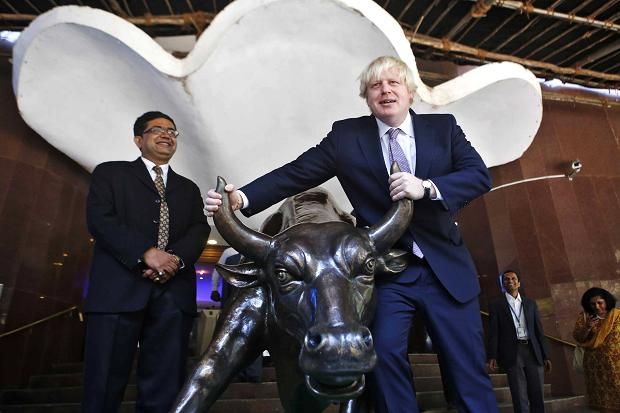We should be happy that the finance minister has seemingly accepted the need for a new monetary policy framework and has indicated the desire to set up a monetary policy committee, says Akash Prakash.

The Union Budget has, by and large, met most rational expectations of what could have been delivered.
Budget 2015: Complete Coverage
The arithmetic seems realistic, with gross tax revenues growing by 15.8 per cent and total expenditure by six per cent (because of lower central transfers).
Subsidy at Rs 2.44 lakh crore (Rs 2.44 trillion) actually seems conservative.
As expected, there was a step-up in the capital expenditure of the government, rising by 25 per cent.
The beginnings of expenditure switching from subsidies towards capex is visible.

The finance minister has delivered an increase of Rs 70,000 crore (Rs 700 billion) in infrastructure expenditure and smartly moved to set up a National Investment Fund in which the Centre will invest Rs 20,000 crore or Rs 200 billion (PSUs may also invest their surpluses), which can be leveraged four to six times through issue of debt at the fund level.
The willingness to allow tax-free bonds for highways, rail and irrigation shows pragmatism.
Moving ahead on the idea of auctioning infrastructure projects on a plug-and-play concept (projects with all approvals in place) makes a lot of sense.
They are starting with four UMPPs, but have talked of extending this concept to other infra sectors.
This is one way of getting the private sector to re-enter the infra space.
The idea of a public contract resolution Bill, if properly designed and legislated, will hopefully help clean up some of the contractual issues in this space.

We should be happy that the finance minister has seemingly accepted the need for a new monetary policy framework (based on inflation targeting) and has indicated the desire to set up a monetary policy committee.
The only caveat being that this new construct should not reduce the Reserve Bank of India's current independence from the finance ministry.
The willingness to legislate a new modern bankruptcy code in place of the Board for Industrial and Financial Reconstruction and the sick companies Act is a huge positive.
This will deter wilful default, unlock dead assets and reduce risk aversion in the banking system.
One hopes they move ahead as quickly as possible on this and it does not get derailed by vested interests.
There seems to be a determination to move forward with very onerous new legislation on black money creation. Budget 2015: Complete Coverage

Again if not derailed by vested interests, this can be very significant.
The road map for cuts in corporate tax (five per cent over four years) and a phasing out of exemptions is a positive surprise, and exactly the direction they should move in: lower tax rates but fewer exemptions.
The only issue is the uncertainty around exactly which exemptions will be cut. You may see hectic lobbying here.
There has been some attempt to rebuild trust on the tax side.
The General Anti-Avoidance Rules have thankfully been postponed by two years and made prospective for transactions after 2017.
The transfer-pricing limit (for tax scrutiny) has been raised from Rs 5 to Rs 20 crore (Rs 50 to Rs 200 million).
Wealth tax has been scrapped (to simplify matters) with no loss of revenues.

There has also been some clarifications around the whole issue of indirect transfer of assets, but still not full clarity.
The finance minister has again reiterated the principle that there will be no retrospectivity in taxation, but still remains unable to offer any legislation to back up his assertions.
The first steps towards a bank holding company, merging of the Forward Markets Commission with the Securities and Exchange Board of India, clarifications around the real estate investment trust structure, allowing large non-banking finance companies' to use the Securitisation and Reconstruction of Financial Assets and Enforcement of Security Interest Act and moves to dis-incentivise cash transactions are all much-needed reform.
The inverted duty structure issues have also been addressed, at least in the electronics sphere.
The beginnings of a social safety net as well as steps to monetise the vast gold holdings stranded with households are again positive developments.
Net market borrowings are up only two per cent to Rs 4.56 lakh crore (Rs 4.56 trillion), very much in line with market expectations.
I do not think we should be that annoyed with the move to delay the fiscal consolidation by one year.

The new plan of 3.9 per cent (2015-16) going to three per cent by 2017-18 seems more realistic, especially given the coming pay commission.
On the negative side, the whole issue of PSU banks and their recapitalisation remains in cold storage.
Budget 2015: Complete Coverage
Only Rs 7,000 crore was allocated in 2014-15 and the Budget has provided only Rs 8,000 crore for 2015-16.
I still do not understand why the Centre continues to pretend that there is no issue here. If we were to get an economic recovery, there is absolutely no ability to lend for 70 per cent of the banking system.
There has to be a concrete game plan to recapitalise and restructure these banks along the lines of the P J Nayak committee.
I was also disappointed that more clarity was not given on the road map for moving to cash-based transfers.

The Budget provides Rs 2.44 lakh crore (Rs 2.44 trillion) for subsidies (a drop of only nine per cent).
This does not seem to indicate that much thought has been put in or action to be expected for better targeting of these subsidies.
It also seems clear that the whole direct benefits transfer method is not moving beyond LPG for this year at least.
One would have also liked to see a clearer game plan to improve ease of doing business, beyond a new committee to design draft legislation to obviate the need for many permissions.
More clarity and aggression in cleaning up the tax code, pruning all exemptions on both the direct and indirect tax side would have been appreciated, though burying the direct taxes code probably makes sense.
On the whole a very reasonable effort.
Far better than the previous Budget. While markets may consolidate here for a bit and wait for earnings to catch up, the bull market is in no danger.
Akash Prakash is with Amansa Capital.











